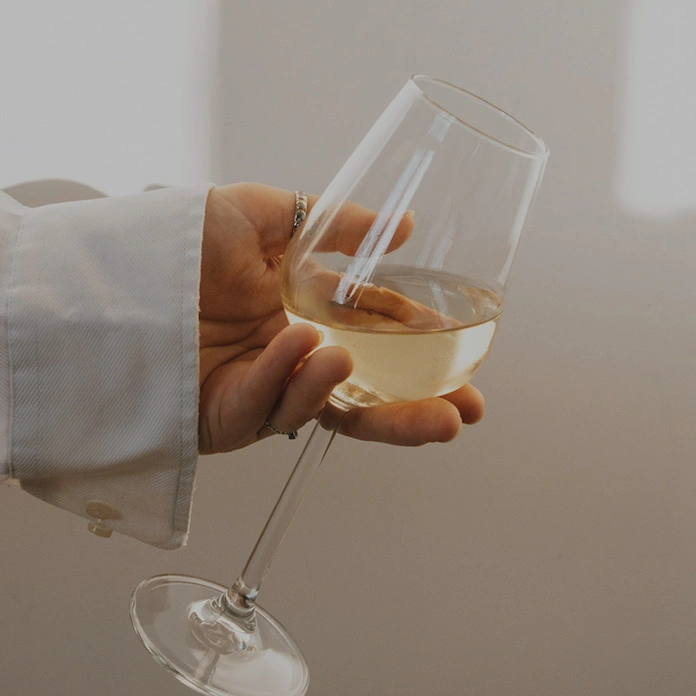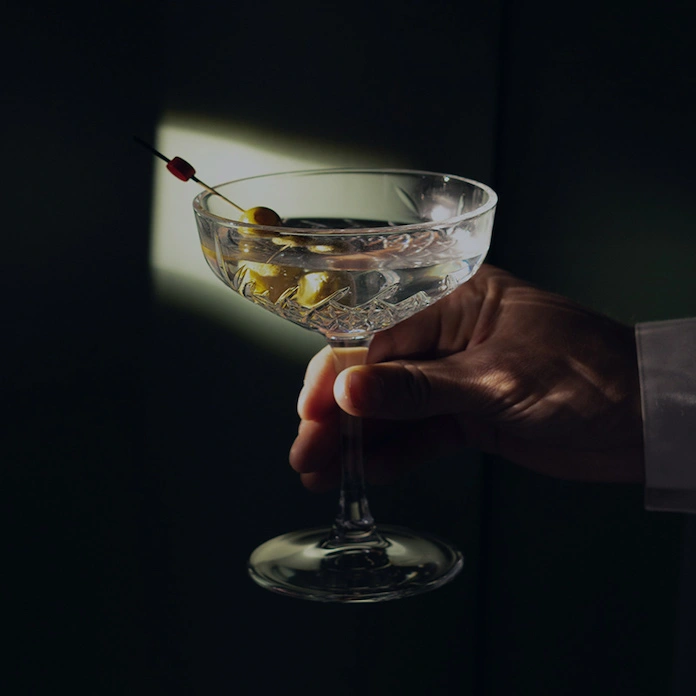In the Northern Rhône’s tiny outpost of Cornas, the wines continue to reach new heights of quality and offer consumers major bang-for-your-fine-wine-buck — thanks in large part to Jean-Luc Colombo and his family.

It’s a universal truth: like it or not, fashion always comes back around. From Prohibition-era cocktails (a definite like) to denim overalls (verdict’s still out on that one) most phenomena usually get a second chance at popular culture stardom.
Things are no different in the various latitudes of the wine world.
Whether you’re in the trade, a general enthusiast, or a casual consumer, chances are good you’ve fallen into step with one wine craze or another at some point. Think about it. There were two heydays of rosé — first came white Zinfandel in the 80s, then a wave of Provençal-inspired pinks dominated wine shop shelves and lists. And what of the post-Sideways pinot peak and the following (unnecessary) “fall” of merlot. There never is, nor should there be, any accounting for taste. Our industry rather demands it.
However, if there’s ever been one critical victim of the wine fashion police, it’s the Northern Rhône’s outpost of Cornas. In the not-too-distant past, its wines were thought of by many critics as too “rustic” … an especially stark observation when compared to suave (and far pricier) neighbors like Hermitage and Côte Rôtie.
But Cornas has been evolving. It hasn’t been a quickie montage makeover scene, either. This turning of the tides has taken time, investment, and most importantly faith that these precipitous slopes are prime territory for growing some of the world’s best Syrah.

Only 2 miles across and with roughly 110 hectares / 272 acres under vine, Cornas is tiny. It’s also at the southern reaches of what’s considered the Northern Rhône, which allows just a touch of that Mediterranean warmth to creep up the valley and kiss the vines, helping grapes ripen at least a week or two before the other Northern Rhône appellations.
Rising in dramatic fashion up and westward from the banks of the Rhône River on ancient granite soils, the southerly facing vineyard-scape of Cornas is often referred to as an amphitheater, a handy geographical feature which shelters the vines and their delicate berries from the brutish Mistral wind, whistling down from the north.
It is this special combination of aspect, altitude, and porous soils that gives Cornas its character. The Syrah grapes gain deep ripeness and slightly higher levels of alcohol from long sunshine hours yet retain a freshness, aromatic complexity, and distinctive minerality owing to those free-draining, heat-retaining, decomposed granite soils and the cooler temps from higher elevation (up to about 351 meters / 1,150 feet).

Like so many of Europe’s great wine regions, Cornas has a long history, too. Its trademark chaillées (stonewalled terraces) likely date to the Romans and are what shore up the land to allow for the rigors of viticulture—but even with these stony fortifications snaking their way across the hillsides, vineyard work is precarious, taxing stuff. And everything must be done by hand. This is not winemaking territory for the faint of heart.
Early references to this vertiginous clutch of vineyards date to Charlemagne’s time in the late 700s; famously conservative in his consumption, the great king and future Holy Roman Emperor was reportedly a fan of the wines of Cornas, as were King Louis XV and Armand Jean du Plessis, Duke of Richelieu.
Time rolled on and epic battles — of men and of nature — unfolded. Even after the official AOC was established in 1938, everything from bloody wars and labor shortages to devastating frosts and the phylloxera scourge embroiled Cornas and its people. Yet the village and the vines endured. (Perhaps it is this history of hardship which imbued the wines of Cornas with that rough-and-tumble persona critics love to hate … )
Speaking of battles, there is a never-ending struggle that spans the whole of the world of wine and Cornas has not escaped its effects — thank goodness for that. After all, it’s the constant push-and-pull rivalry between traditionalists and modernists that coaxes the very best expressions from any terroir and offers us wine fans a little variety.
In Cornas’ traditional corner, legends like the late Auguste Clape and the late Noël Verset set the stage for a rebirth. Their trust in these hills was unwavering, and they pioneered a new “old style” of Cornas, made in the image of the tannic, harsh-edged wines everyone knew; these were silkier, higher-caliber bottlings owing to better vineyard management and grape selection, but they retained their angles and muscularity in the glass, made still with traditional techniques like whole cluster fermentation, stems and all.
Then came an unlikely, modernist lightning bolt.

Our friend Jean-Luc Colombo, then a young pharmacist with an enormous passion for food and wine (instilled in him by his mother and grandmother), moved to Cornas in 1982. A native of Marseilles, he’d been bitten by the wine bug and fell hard for the Rhône — Cornas in particular. Armed with all that chemistry know-how, he began consulting for producers around the Rhône Valley and his successes in the vineyards quickly garnered the attention of critic Robert Parker, who called him a “revolutionary enologist” in 1985. A few short years passed and in 1987, Jean-Luc struck out on his own, releasing the inaugural vintage of his flagship, single-vineyard cuvée, Les Ruchets (“the bee hive”).
This isn’t just any old vineyard. Most of the vines in Les Ruchets are ~90 years old and are what the locals call francs de pieds—“true vines” that are un-grafted and grow on their own, natural rootstocks. A serious rarity in the post-phylloxera world. The hill itself is only slightly steeper than a black diamond ski slope and, perhaps most importantly, it is part of the larger Chaillot vineyard site, recognized as one of the best spots in the region. Chaillot overlaps the village proper, faces due southeast, and is blessed with an exceptional concentration of granite soils, producing wines that are notably full bodied and very refined.
Jean-Luc’s wine was so good, it launched him — and Cornas — into the international spotlight. Critics, sommeliers, and other wine buffs began craning their necks to take in this new Cornas and its dynamic champion. He who destemmed his grapes and unapologetically employed new oak (a first for the region), revealing syrah’s voluptuous side for all to see. Quite scandalous. And quite delicious.
The acclaim poured in after that. “Winemaker of the Year” titles, spots on Top 100 lists …Jean-Luc was even awarded the French Legion of Honor for his contributions to France’s wine industry (an accolade won the following year by his wife, Anne; a force in her own right, she is active in the family vineyards and spearheads their “Bee Kind” conservation initiative, among other things).
Jean-Luc even makes certain that his labels are lovely, too. They are custom creations from painter Marie Annick Dutreil, paintings she says attempt to capture “the fervor, spirit, and elegance of the wines, in the same way clever and elegant accessories enhance the beauty of a haute-couture dress.”

Today, much of the winemaking is managed by Jean-Luc’s daughter, Laure, who is clearly poised to continue her father’s mission to promote phenomenal Cornas to a new generation of wine fans. The opulent flavor profile that helped put Jean-Luc on the map all those years ago are now fading in popularity, taking a backseat to wines that follow on with the evolution of consumer tastes. These are wines which possess a more sinewy backbone, loads of freshness, and (most importantly, these days) balance.

The Colombos, along with many other forward-seeing producers in the region, are now planting even higher on those already precarious slopes and are still allowing terroir, not technology, to take center stage in the glass.
Isn’t that, after all, the point?
Whatever new heights Cornas (and the Colombo family) reach, we know this much: Some things — in this case, creativity and a passion for the exquisite expression of terroir — will never go out of style.

Hand-selected, exceptional wines that deliver quality and enjoyment at every level.

A distinctive selection of artisanal spirits that inspire creativity and exploration.

